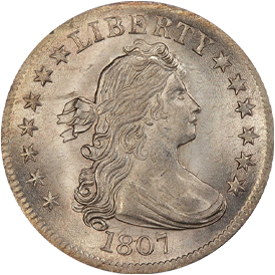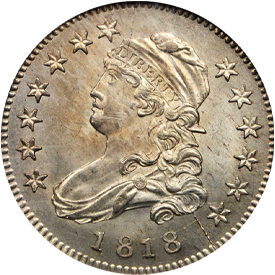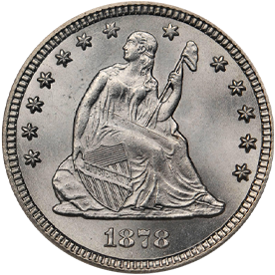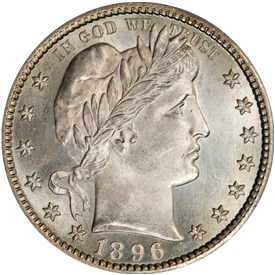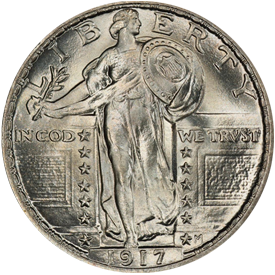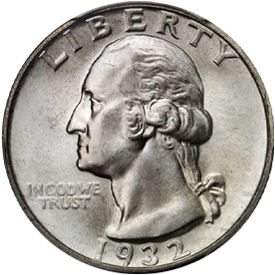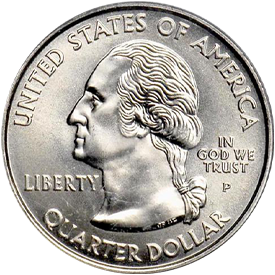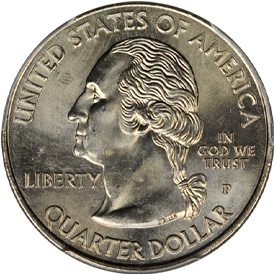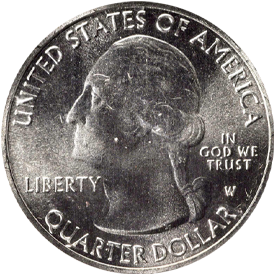Like the dime, even though the quarter was authorized in the Mint Act of 1792, production did not get underway until four years later in 1796. Using the then-current Draped Bust design with the small eagle reverse, the 1796 was a one-year type as production did not resume until 1804, by which point the heraldic eagle reverse was in use. A seven-year suspension followed from 1808 to 1814, with production again resuming in 1815 with the John Reich’s Capped Bust design.
After a reduction in diameter in 1831, production has remained fairly consistent, missing only 1922, 1931 and 1933 since then. Mintages of minor silver coins throughout the 1880s were quite low as nearly all of the mint’s silver and resources were consumed with striking huge quantities of Morgan silver dollars.
Key dates in the quarter series include the 1796, 1804, 1823/2, 1860-S, 1870-CC to 1873-CC inclusive, 1901-S, 1916 Standing Liberty, 1918/17-S as well as numerous varieties. Among recent key dates, the 1932-D and S stand out as well as the 1943 Doubled Die obverse.
With inflation, the quarter is now probably the most useful of the “pocket change” carried by Americans, finding continued use in parking meters and vending machines. As the half dollar has all but disappeared and a dollar coin has failed to circulate as well, the quarter remains the workhorse coin in modern commerce.
Collector interest in quarters has also been stimulated over the past 25 years or so due to the numerous special reverse series that have been struck since 1999. These include the State and Territorial Quarters (1999-2009), the America the Beautiful (National Parks) series (2010-2021) and the current American Women series which uses Laura Gardin Fraser’s outstanding obverse design from 1932.
